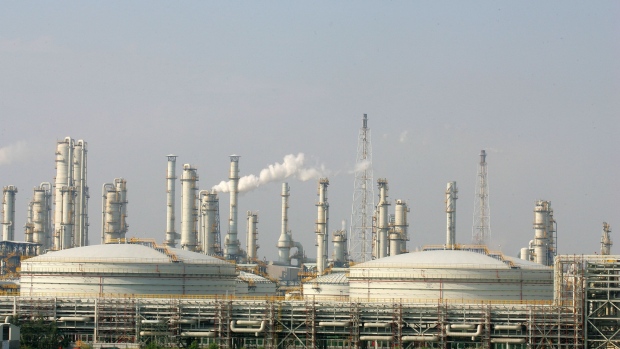Mar 12, 2024
Korean Authorities Probe Petchems Producers Over Naphtha Imports
, Bloomberg News

(Bloomberg) -- South Korean customs authorities are investigating the origins of the nation’s imports of naphtha, a plastics-making ingredient, with a focus on Russian supplies.
The probes are examining purchases by several petrochemical makers in the country, people with knowledge of the matter said.
They include at least one of Korea’s biggest players, with the customs department making its way across the industry over the past week. South Korean authorities have also contacted trading house Trafigura Group, the people said.
There is a Group of Seven cap that bars access to western service providers of Russian oil and fuels if the cargoes cost above certain price levels.
South Korea’s police, Fair Trade Commission and Korea Customs Service declined to comment on the matter.
In the probes, authorities are looking into the true origin of cargoes purchased by end-users in South Korea, said two of the people. Specifically, they’re investigating if naphtha from Russia may have been re-labeled and offered to buyers as shipments from other nations.
While not part of the G-7, South Korea has supported measures that the group of powerful nations imposed to try and punish Moscow for its war in Ukraine. When fuels cost above certain thresholds — $100 a barrel for premium fuels and $45 for discounted ones — tanker companies, insurers and others in the west are not allowed to provide their services for the trade.
A spokesperson from LG Chem Ltd said the company is not related to the alleged case, referring to investigations by customs. Lotte Chemical Corp and HD Hyundai Chemical Co are aware that investigations are underway and are monitoring developments, said their spokespeople. Trafigura declined to comment.
Thirst for Feedstock
In recent years, South Korea’s petrochemicals companies have had a tough time securing the naphtha they need. Traditionally reliant on Iranian condensate, that source of supply dried up because of US sanctions on the Persian Gulf nation. They then leaned more heavily on Russian naphtha but the war in Ukraine also complicated those purchases.
Prior to the invasion of Ukraine, Russia was South Korea’s top naphtha supplier, providing more than 25% of the nation’s imports in 2021, according to data from shipping intelligence firm Kpler. After the war, buyers began to shun direct purchases of Russian fuel amid US sanctions and fears of increased government scrutiny, while imports from nations such as Tunisia, United Arab Emirates, Singapore climbed.
Traders in Asia have found South Korea’s imports from Tunisia particularly curious, they said, as the North African nation is home to just one small refinery with limited ability to produce significant volumes of oil products.
According to official data, flows from Tunisia surged to 5.8 million barrels in 2023, the highest level since at least 1992 when Korea National Oil Corp. started to compile data. That’s more than double the amount purchased in 2022, and compares with zero imports in 2021. Figures from KNOC and Kpler may differ due to methodology.
Keeping track of naphtha flows is tricky because there are different varieties of the feedstock — which can also be used for making gasoline — that fall under different numeric trade identifiers. They’re also subject to different price thresholds under the G-7 cap.
Since July 2022, South Korea halted all purchases from Russia of everything falling under the six-digit code 270112, according to data from ITC Trade Map, a United Nations-World Trade Organization venture. That encompasses what the European Union called naphtha when it set out its price cap.
(Updates with Trafigura in third and eighth paragraphs.)
©2024 Bloomberg L.P.






